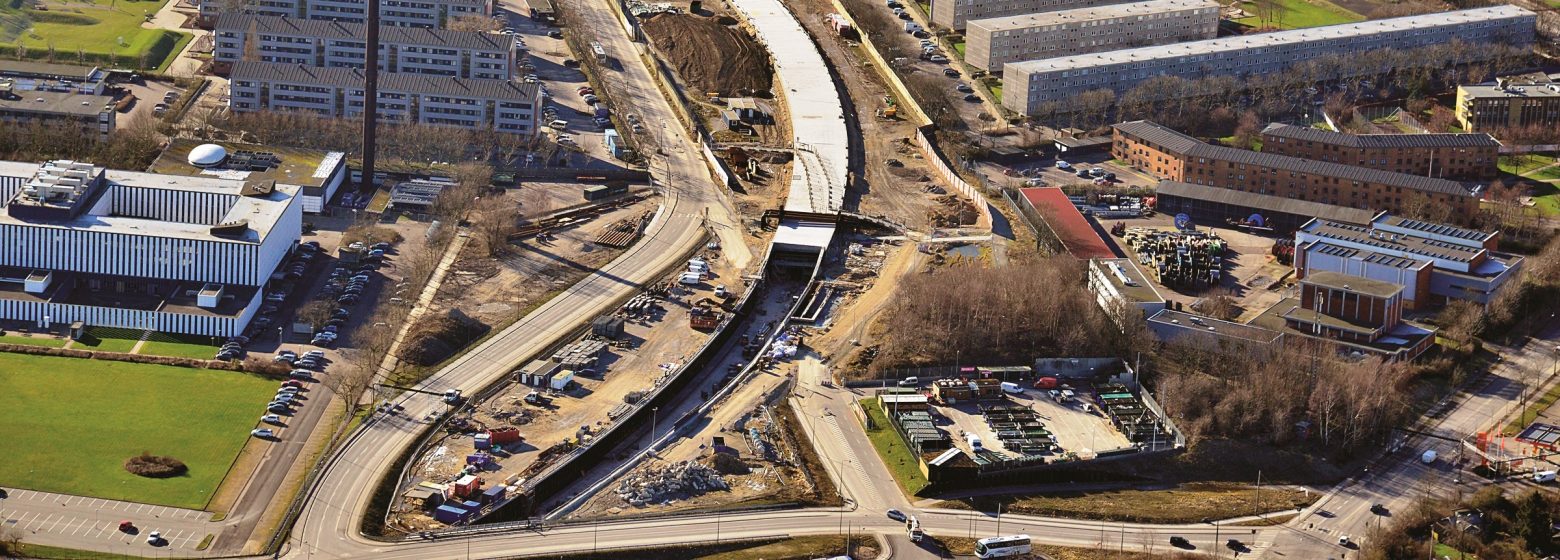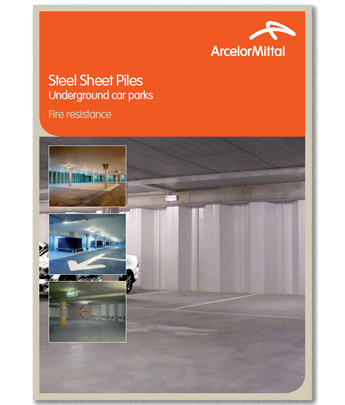
Tunnels and Underpasses
Tunnels are underground passageways, dug through the surrounding soil and enclosed except for an entrance and an exit at each end. As bridges, they are essential for a well-functioning transport network. In urban areas, they are usually built at locations with limited space at the surface.
Underpasses are very similar structures, except that they are usually shorter. Underpasses improve traffic flow in traffic intense intersections at the street level, sometimes in combination with bridges. Underpasses are generally designed as a rehabilitation of a crossroad, and hence speed of execution is of utmost importance.
Hot rolled steel sheet piles are ideal for tunnel and underpass construction, due to:
An alternative method is the top-down method, where the soil is dug below the top slab, which is executed right after installation of the sheet pile structure. In this configuration, traffic disruption at street level can be reduced drastically. The main drawback is a slightly longer excavation phase, but it does not disturb traffic nor reduce the benefits of this method.
Challenges for the designer are fire resistance and watertightness. ArcelorMittal developed in collaboration with the University of Liège in Belgium a design method and a software that can simulate the behaviour of a steel sheet pile wall under high temperature in different soil conditions. One of the parameters is the temperature evolution on the atmospheric side, which depends highly on the fire approach (ISO curves or natural fire). For more information, see our brochure “Underground car parks: Fire resistance”.
Underpasses are very similar structures, except that they are usually shorter. Underpasses improve traffic flow in traffic intense intersections at the street level, sometimes in combination with bridges. Underpasses are generally designed as a rehabilitation of a crossroad, and hence speed of execution is of utmost importance.
Hot rolled steel sheet piles are ideal for tunnel and underpass construction, due to:
- faster execution time,
- reduced surface disruption, as no over excavation for foundations is required,
- sheet piles have immediate load-bearing capacity,
- steel sheet piles can be easily made aesthetically attractive,
- guaranteed imperviousness through the use of sealing products or welded interlocks,
- excellent fire resistance performance with and without protection.
An alternative method is the top-down method, where the soil is dug below the top slab, which is executed right after installation of the sheet pile structure. In this configuration, traffic disruption at street level can be reduced drastically. The main drawback is a slightly longer excavation phase, but it does not disturb traffic nor reduce the benefits of this method.
Challenges for the designer are fire resistance and watertightness. ArcelorMittal developed in collaboration with the University of Liège in Belgium a design method and a software that can simulate the behaviour of a steel sheet pile wall under high temperature in different soil conditions. One of the parameters is the temperature evolution on the atmospheric side, which depends highly on the fire approach (ISO curves or natural fire). For more information, see our brochure “Underground car parks: Fire resistance”.
Dernière modification : janvier 7, 2022



 English
English Deutsch
Deutsch Italiano
Italiano